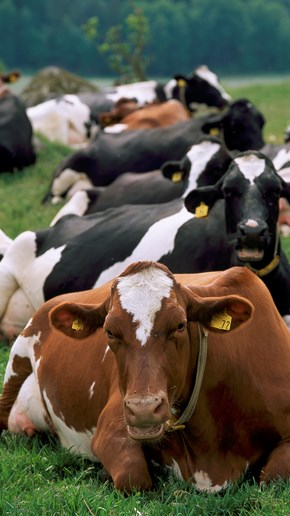
Swedish cattle are, in an international comparison, very healthy, and the use of antimicrobials is low. Many diseases that are present in other countries occur only sporadically or are absent. Efficient control and surveillance programs have resulted in freedom from diseases like tuberculosis, brucellosis, and paratuberculosis, as well as freedom from infections like bovine virus diarrhoea virus (BVDV), infectious bovine rhinotracheitis (IBR) virus and bovine leucosis virus (BLV). The prevalence of salmonellosis is also very low.
However, as the herd size has increased markedly in dairy herds the risk for spread of endemic infectious diseases has increased. Mastitis, udder inflammation, remains the most common illness in dairy cows, while diarrhea and respiratory diseases are most common among dairy calves.
Useful information in English from SVA and other organisations
- Basic veterinary infection prevention and control procedures(pdf)
- FAO-report on antibiotic use in the Swedish dairy sector (pdf)
- Guidelines for the use of antibiotics in production animals (pdf)
- Health statistics of dairy cattle in Sweden 2019-20
- Recommendations for drying off and the dry period (pdf)
- Recommendations for dry cow therapy with antibiotics (pdf)
- Recommendations for prevention of mastitis in newly calved heifers (pdf)
- Surveillance of infectious diseases in animals and humans 2021 (pdf)
- Tools for mastitis field diagnostics (pdf)
- Udder health pyramids (pdf)